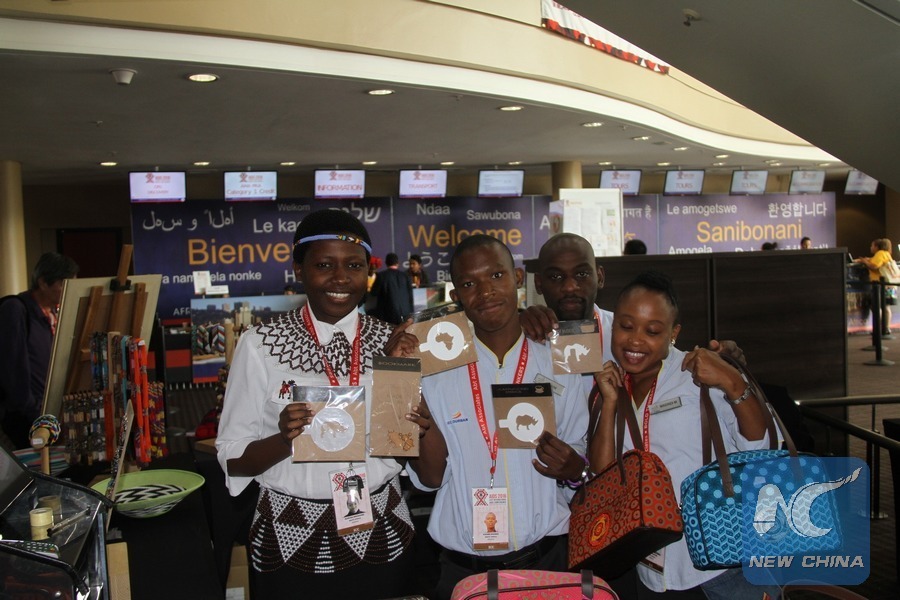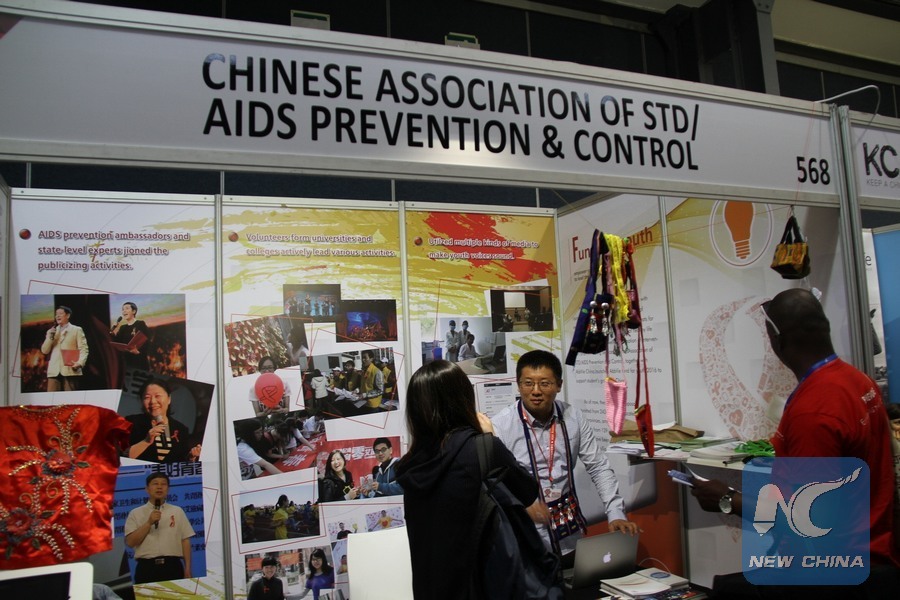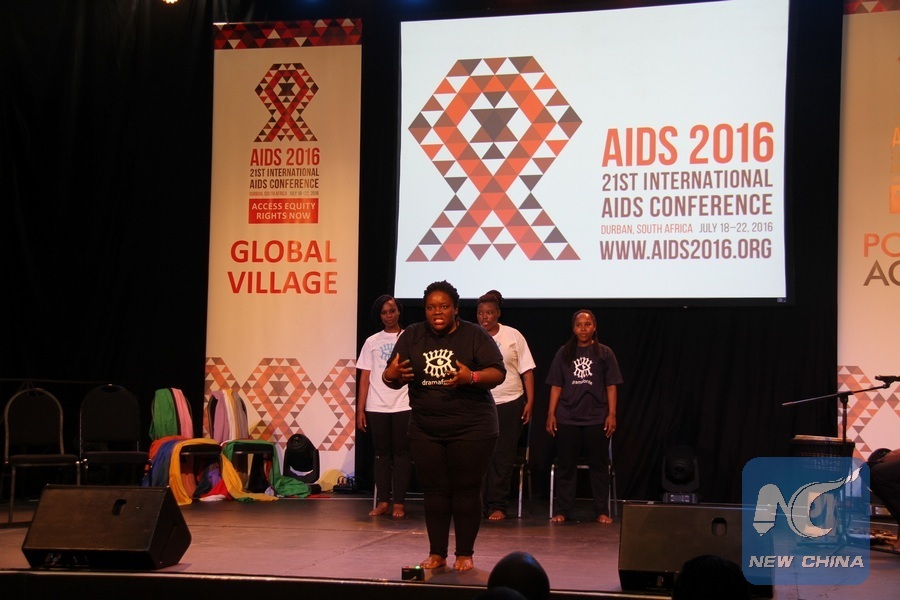Roundup: Call to action as AIDS 2016 ends – Xinhua

Volunteers pose for a photo during the 21st International AIDS Conference, in Durban, South Africa, July 22, 2016. The 21st International AIDS Conference (AIDS2016) concluded in Durban on Friday with a pledge to eradicate AIDS by 2030. (Xinhua/Gao Yuan)
By Ndumiso Mlilo
DURBAN, July 23 (Xinhua) — On the final day of the 21st International AIDS Conference (AIDS 2016) in Durban on Friday, delegates called for focus on preventing new infections and targeting women and children.
Many expressed satisfaction with the conference. South African Deputy Minister of Social Development Henrieta Bogopane-Zulu told Xinhua that the conference met the expectations.
She said, “We are happy as South Africa to be given another chance to redeem ourselves, share our best practice, learn from others and benchmark best practices. I am impressed with the researches which came up at this conference. It shows that an AIDS free generation is possible.”
Malebona Precious Matsoso, Director General of the SA Department of Health, called on all stakeholders to address some of the issues which came out in the conference if the epidemic is to be defeated.

A Chinese researcher (C) talks with visitors during the 2016 conference calls for eradication of Aids, in Durban, South Africa, July 19, 2016. The 21st International AIDS Conference (AIDS 2016) officially opened in Durban on Monday, calling for eradication of the deadly pandemic by 2030. (Xinhua/Gao Yuan)
She said, “We need to prioritize areas and financial mechanism need to be explored. We need to make sure there is access to vaccines, even in emergency situations. The ambitious targets of 90-90-90 will not be possible unless we are innovative.”
The UNAIDS fast track strategy seeks to ensure that 90 percent of HIV-positive people know their status, 90 percent are able to access antiretroviral treatment (ART), and 90 percent of those on treatment attain viral suppression, by the year 2020.
Concerns were also expressed during the conference about the attempt by the U.S. working with pharmaceutical companies to pressurise India to allow them stakes in medicine production in the Asian country.
Matsoso said there should be competition in the drug manufacturing companies to reduce the prices of HIV generic drugs.
She stated that competition has reduced the HIV drugs by 53 percent.
Matsoso also called for a strategic package in responding to HIV, saying, “We have to address the deadly duo of HIV and tuberculosis. We need to also address tuberculosis because we cannot end HIV while ignoring tuberculosis. We have seen that putting people early on antiretroviral reduces chances of tuberculosis.”

A South African volunteer (Front) shares her first time experience to get an HIV blood test, during the 2016 conference calls for eradication of Aids, in Durban, South Africa, July 19, 2016. The 21st International AIDSConference (AIDS 2016) officially opened in Durban on Monday, calling for eradication of the deadly pandemic by 2030. (Xinhua/Gao Yuan)
As from September 2016, South Africa will put all HIV positive people on treatment on a program called Test and Treat.
While 17 million people are on ART treatment world-wide, about 20 million HIV positive have no access to treatment.
There was a call to also ensure that all HIV positive people access treatment.
Matsoso said South Africa is at an advanced state towards attaining the AIDS free generation by 2030 if they remove some remaining barriers like new infections.
South Africa now invests about 1.5 billion dollars per annum in the fight against HIV/AIDS. The country is now using over 80 percent of its resources to combat AIDS.
The conference also dealt with the issue of donor funding to boost the fight against AIDS.
There have been concerns that the continuing reduction in funding will make it difficult for low poor countries to fight the pandemic.

Delegates attend the 21st International AIDS Conference, in Durban, South Africa, July 22, 2016. The 21st International AIDS Conference (AIDS 2016) concluded in Durban on Friday with a pledge to eradicate AIDS by 2030. (Xinhua/Gao Yuan)
Addressing the delegates, Michel Sidibe, Executive Director of UNAIDS and Under-Secretary General of the UN, said, “When we just need to front-load our investments, donor funding has declined – 13 of the 14 donor governments have cut their funding in the past year.”
Sidibe said the world should guard against complacency but build on the success made so far.
Some achievements have been made in the last 16 years. In the year 2000, only 770,000 people were on the ART, but now the number increased to 17 million.
Mahesh Mahalingam, UNAIDS Director, in the office of the Deputy Executive Director Programme, told Xinhua that in the past 15 years, funding has been reduced yearly by 1 billion dollars.
He said the conference stressed the urgent need for more money to respond to HIV.
Mahalingam said there was a call to make sure that the 30 million people who are HIV positive in the whole world are put on treatment and that new infections be attended to.
Mahalingam said, “We have to stop new infections. Infections on children were reduced by 60 percent but on adults for the past 5 years, there have been two million infections per year. From Durban we have to make sure each day counts. There is no room for complacency. Let us build on the achievement. Let us have maximum impact on the money invested. The glass is half full and that is not acceptable, the other half needs to be filled.”
Now only 150,000 babies are born with HIV, while 500, 000 were born infected in the year 2000, the conference revealed.
Christian Hui, 37, an HIV positive form Canada told Xinhua that he is happy about the conference.
He said he enjoyed the vibrant debates and researches which were unveiled at the conference.
He said he was also pleased to see the coming together of 300 HIV positive people to share knowledge at the conference.
“It was great meeting 300 HIV positive people connecting, sharing experience and hope. There was a call to re-think about how we address HIV,” he said.
![]()







